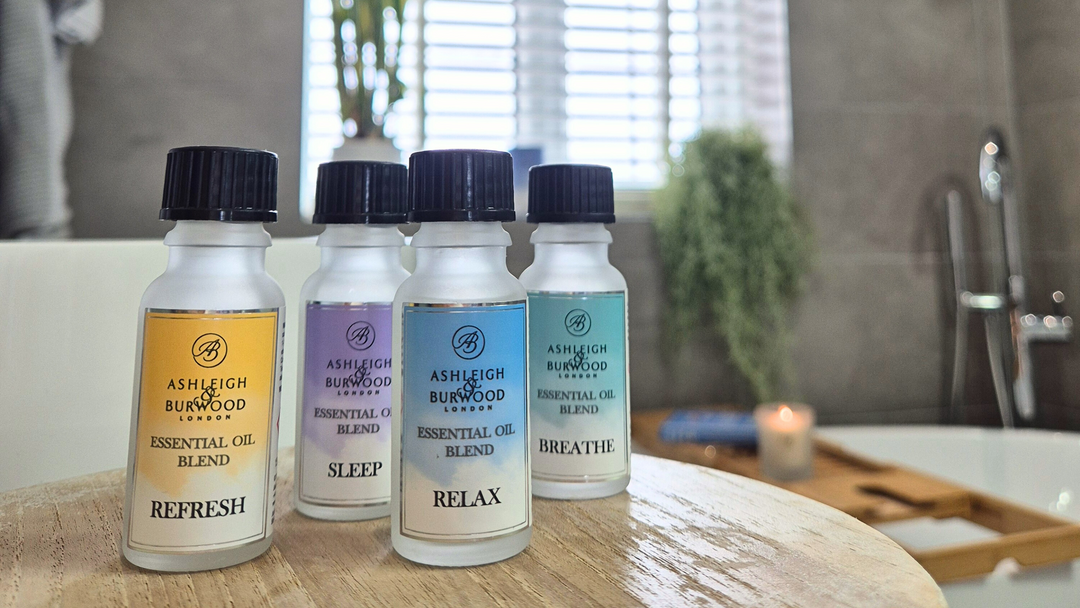What are VOCs and how do they affect you?
Home fragrance products have come under fire lately for containing VOCs (volatile organic compounds) – but what are VOCs, are they bad, and does this mean you should give up the scented candles for good?
With many of us much more health and environmentally conscious these days, we’re increasingly concerned about the risks posed by everyday products which we previously didn’t think twice about using. Fuelled by news articles touting everything from our food to our clothes as potentially bad for us, it’s easy to feel like we can’t use anything without running into unknown dangers.
Lately, scented candles and other home fragrance products, which have risen in popularity over the last few years, have been in the limelight for the risks involved in using them. While there are undoubtedly risks involved in using candles – the biggest being the potential of a fire from careless use – recent stories have focused on their ingredients list, including the controversial presence of VOCs in the formulas.
What are VOCs?
VOC stands for volatile organic compound. While the word volatile in their name sounds dangerous and unpredictable, in chemistry terms a highly volatile substance simply means one with a low boiling point which vaporises at normal room temperature and pressure.
Common types of VOCs include aldehydes, ethers, alcohols, acids and terpenes.
Where are VOCs found?
The majority of VOCs come from biogenic sources, meaning they are produced naturally by plants, animals and other organisms. Even humans naturally produce small amounts of VOCs as we breathe out small amounts of isoprene, acetone, ethanol and methanol among other alcohols.
Biogenic VOCs are often responsible for producing the recognisable scents of different plants. Through this, many play an important role in the natural ecosystem as their scent helps animals and plants communicate, for example by attracting pollinators or repelling herbivores from eating them.
There are also androgenic (aka man-made) sources of VOCs. The biggest contributors of man-made VOCs are fossil fuels, solvents, and aerosols, but lower levels exist in thousands of everyday products. In the home, VOCs are used for a variety of purposes and are present in lots of items, from wall paint and carpets to cleaning products and cosmetics, and everyday tasks like turning on a gas stove or peeling an orange release a small amount of VOCs into the air. Products touted as natural or “chemical-free” alternatives aren’t guaranteed to be VOC-free either as they will often use essential oils like citrus or pine, which naturally contain VOCs d-Limonene and alpha-pinene.
Because of their distinctive scents, VOCs are commonly found in fragranced products which use plant-derived essential oils. d-Limonene, one of the ingredients found in fragrances like Sicilian Lemon, occurs naturally in the rind of citrus fruits and helps give them their zesty scent. Cinnamaldehyde, found in our Orange & Cinnamon scent, comes from cinnamon bark and gives it its unique taste and smell. Linalool, which is an ingredient in Lavender & Bergamot, is produced by hundreds of plant species, including lavender, mint, basil and birch trees.
Our products also use ethanol, naturally sourced from fermented cassava plants, and isopropyl alcohol to create the base carrier for our fragrances. The same alcohols are widely used as the primary ingredients in antiseptics, disinfectants and hand sanitisers.
Are VOCs dangerous?
Although VOCs often come from natural sources, this doesn’t mean they’re always completely harmless – it’s a common misconception that “natural” automatically means safe.
VOCs have been linked to health effects, ranging from mild to serious, depending on the specific VOC involved, the concentration of the substance, and the duration of exposure, with longer term exposures and higher concentrations of VOCs posing increased risk.
Exposure to high levels of VOCs for a short period of hours to days is linked to mild symptoms like irritation of the eyes, nose and throat, headaches, dizziness, nausea and the aggravation of pre-existing conditions like asthma or chemical sensitivities. More serious conditions such as organ damage have been linked to chronic, long-term exposure to VOCs and some VOCs, such as benzene and formaldehyde, are known carcinogens.
While not an immediate health risk, VOCs can also contribute to air pollution if they react with nitrogen oxides to produce ozone.
Should I be concerned about VOCs in home fragrance products?
While there are risks involved with using products that contain VOCs, home fragrance products are unlikely to produce the long-term, high concentration of VOCs in the air that would cause serious concern. VOCs are practically impossible to avoid in low levels as they are present in thousands of products, both biogenic and androgenic, which are used every day with little concern. While we should make sure we’re informed about the products in our homes to make the right choices for us, we should also avoid becoming overwhelmed by scaremongering around chemicals, many of which are naturally occurring or bring benefits which outweigh their risks.
At Ashleigh & Burwood, we do not use any VOCs known to be highly harmful, like formaldehyde or benzene, in our products. VOCs in our products come from the essential oils used to create our fragrances, which are diluted in the final product by the base, or from the widely used alcohols which form the base itself. In Lamp Fragrances, the majority of the IPA in the base is used to sustain the catalytic process, with minimal amounts being released into the air. Reed diffusers release ethanol as they fragrance, but their diffusion process is slower and less widely dispersed.
Solid products like scented candles and wax melts do not use bases with high levels of VOCs which make them a preferable option if you’re concerned about the levels in your home. Only a small amount of VOCs are present in these options, from essential oils in the fragrance and a small amount released from the flame while in use – comparable to the amount released by a gas stove while cooking.
Though low levels of VOCs carry a lower risk and are less likely to cause symptoms, if you experience headaches, dizziness, nausea or irritation while using any home fragrance, you should discontinue use immediately and seek medical advice.
To moderate the risk, make sure you follow the usage instructions for each product and don’t use for longer than the recommended maximum time (e.g. 30 minutes for a Fragrance Lamp and 4 hours for a scented candle). While flames should be kept away from drafts while burning, regular flow of fresh air through the home can help lower the concentration of VOCs indoors.




